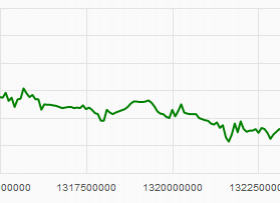Hallo zusammen,
ich habe jetzt in meine Seite ein jquery flot eingebunden (code.google.com/p/flot/), klappt auch soweit gut, nur wird kein Datum angezeigt stattdessen irgendwelche zahlen (z.B. "1310000000"). So sieht es aus:

So sieht der Code aus:
Alles anzeigen
ich habe jetzt in meine Seite ein jquery flot eingebunden (code.google.com/p/flot/), klappt auch soweit gut, nur wird kein Datum angezeigt stattdessen irgendwelche zahlen (z.B. "1310000000"). So sieht es aus:
So sieht der Code aus:
Quellcode
- <?php
- echo '<script id="source">
- $(function () {
- var d = [';
- $result=mysql_query("SELECT * FROM tabelle WHERE user=$userid ORDER BY datum ASC");
- while($row=mysql_fetch_array($result))
- {
- $timestamp = strtotime(''.$row[datum].'');
- echo '[';
- echo $timestamp;
- echo ',';
- echo $row[wert];
- echo '],';
- }
- echo '];';
- echo '
- for (var i = 0; i < d.length; ++i)
- d[i][0] += 60 * 60 * 1000;
- function weekendAreas(axes) {
- var markings = [];
- var d = new Date(axes.xaxis.min);
- d.setUTCDate(d.getUTCDate() - ((d.getUTCDay() + 1) % 7))
- d.setUTCSeconds(0);
- d.setUTCMinutes(0);
- d.setUTCHours(0);
- var i = d.getTime();
- do {
- markings.push({ xaxis: { from: i, to: i + 2 * 24 * 60 * 60 * 1000 } });
- i += 7 * 24 * 60 * 60 * 1000;
- } while (i < axes.xaxis.max);
- return markings;
- }
- var options = {
- xaxis: { mode: "time" },
- selection: { mode: "x" },
- grid: { markings: weekendAreas }
- };
- var plot = $.plot($("#placeholder"), [{ data: d, label: "Gewicht", color: "green", lineWidth: 12}], [d], options);
- var overview = $.plot($("#overview"), [d], {
- series: {
- lines: { show: true, lineWidth: 1 , fill: true},
- shadowSize: 0
- },
- xaxis: { ticks: [], mode: "time" },
- yaxis: { ticks: [], min: 0, autoscaleMargin: 0.1 },
- selection: { mode: "x" }
- });
- $("#placeholder").bind("plotselected", function (event, ranges) {
- plot = $.plot($("#placeholder"), [d],
- $.extend(true, {}, options, {
- xaxis: { min: ranges.xaxis.from, max: ranges.xaxis.to }
- }));
- overview.setSelection(ranges, true);
- });
- $("#overview").bind("plotselected", function (event, ranges) {
- plot.setSelection(ranges);
- });
- });
- </script>';


